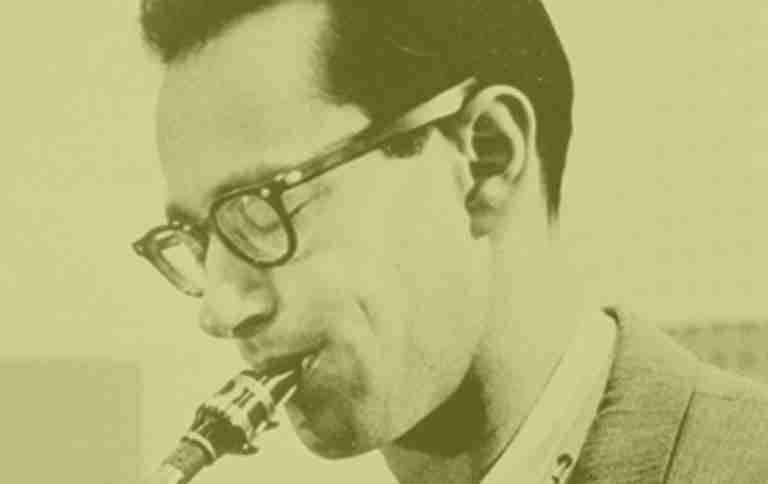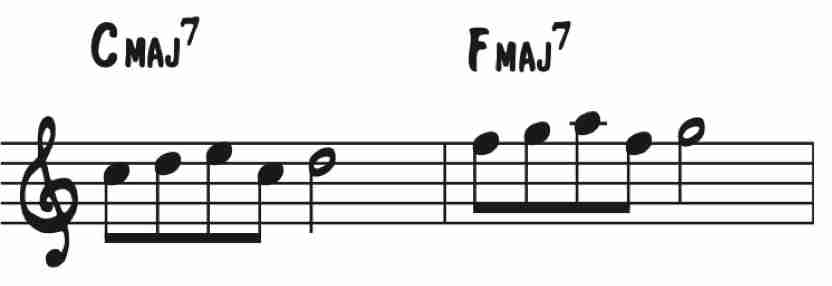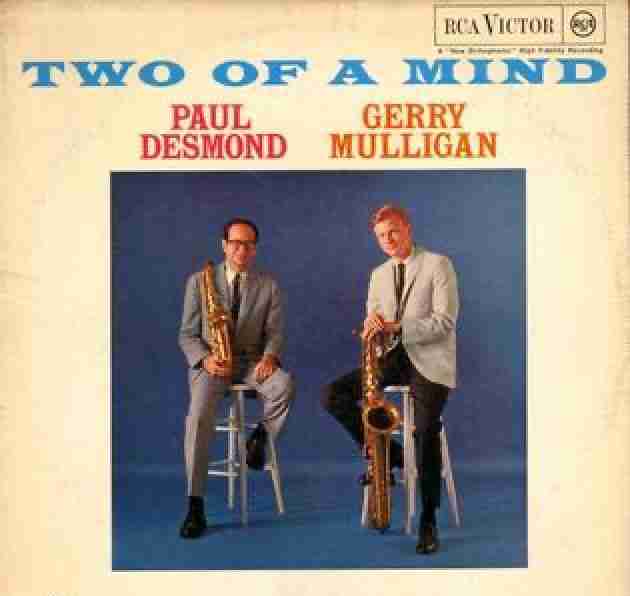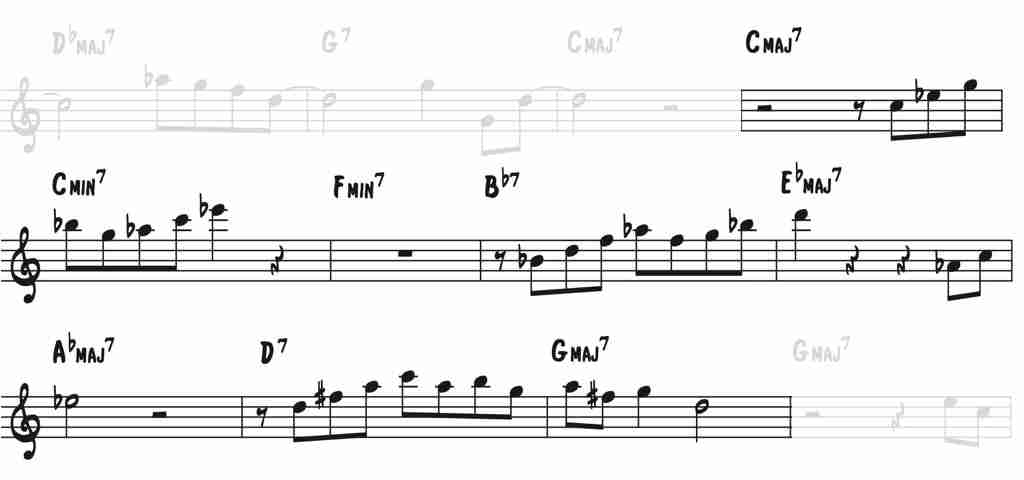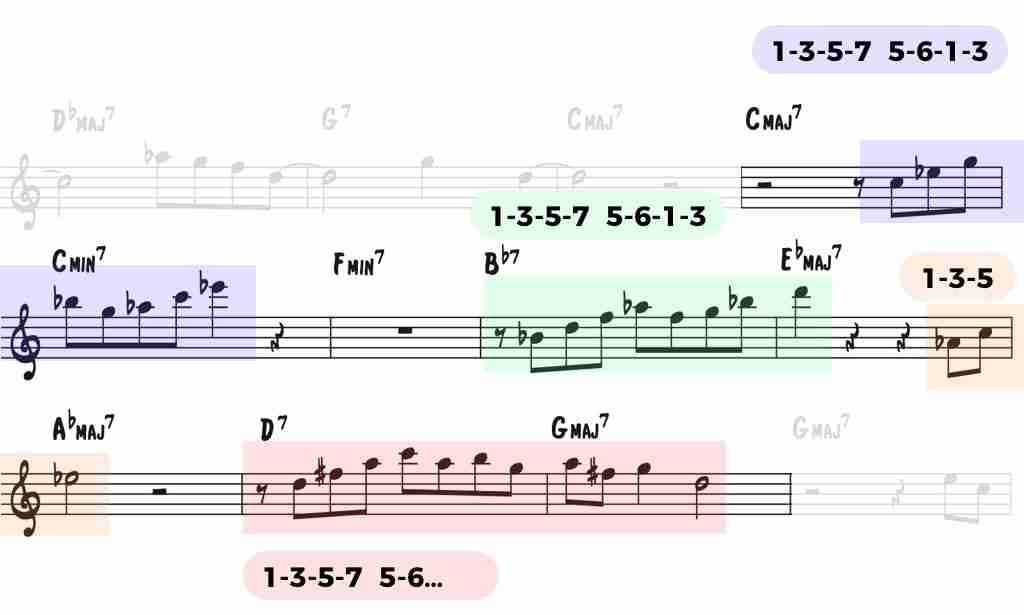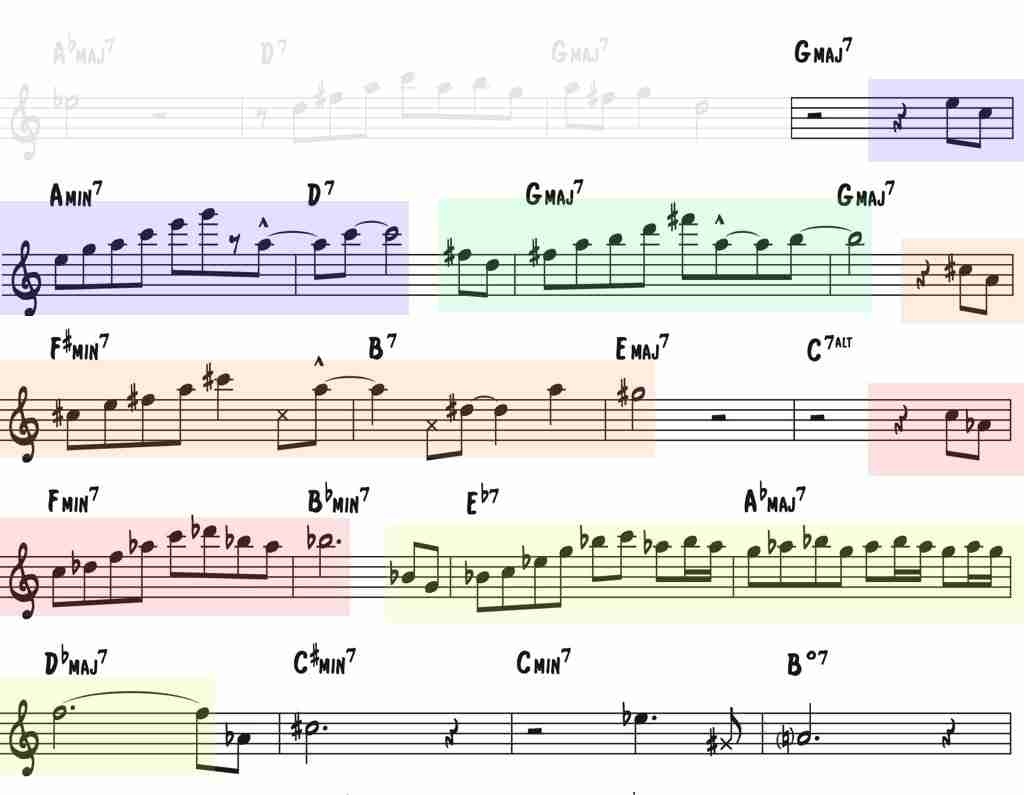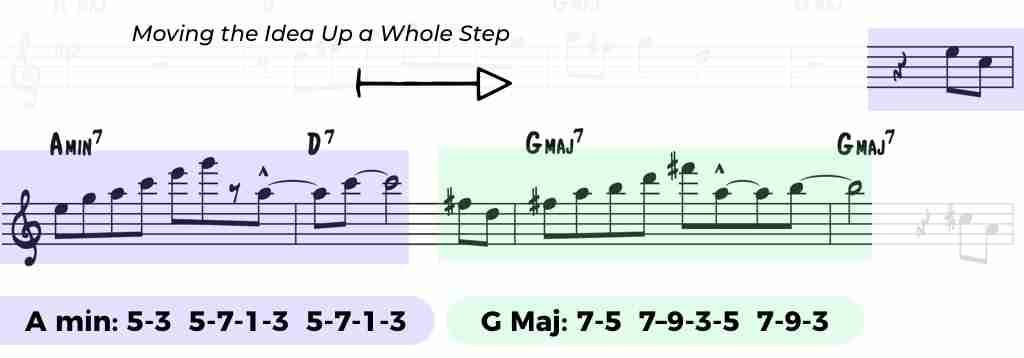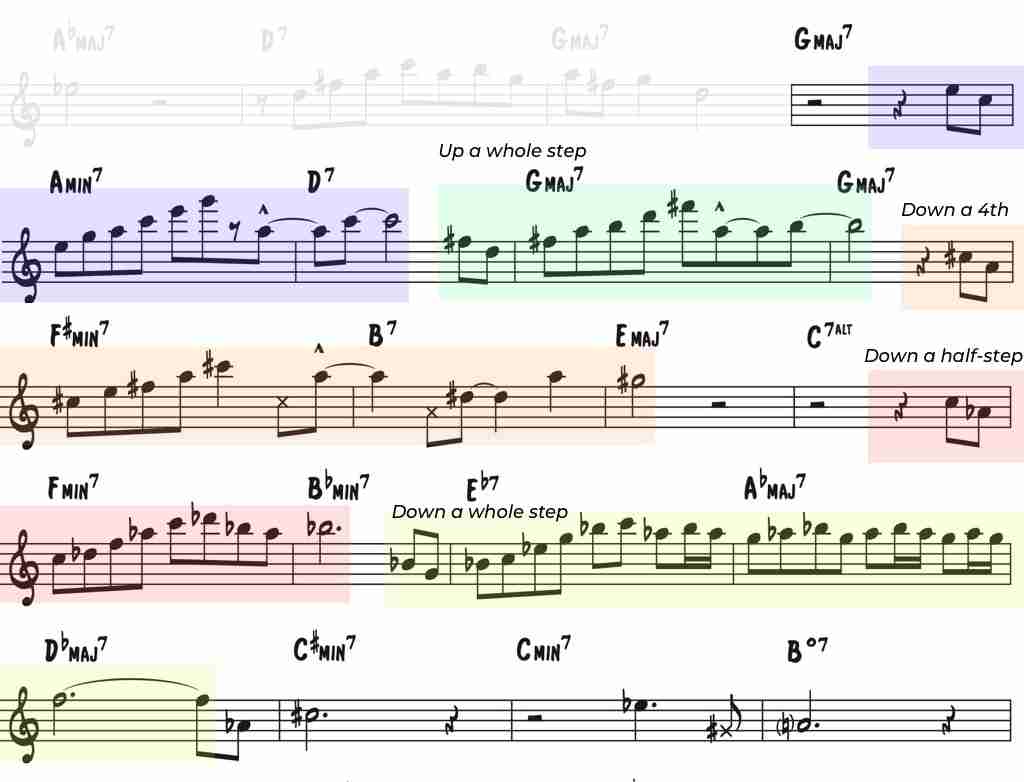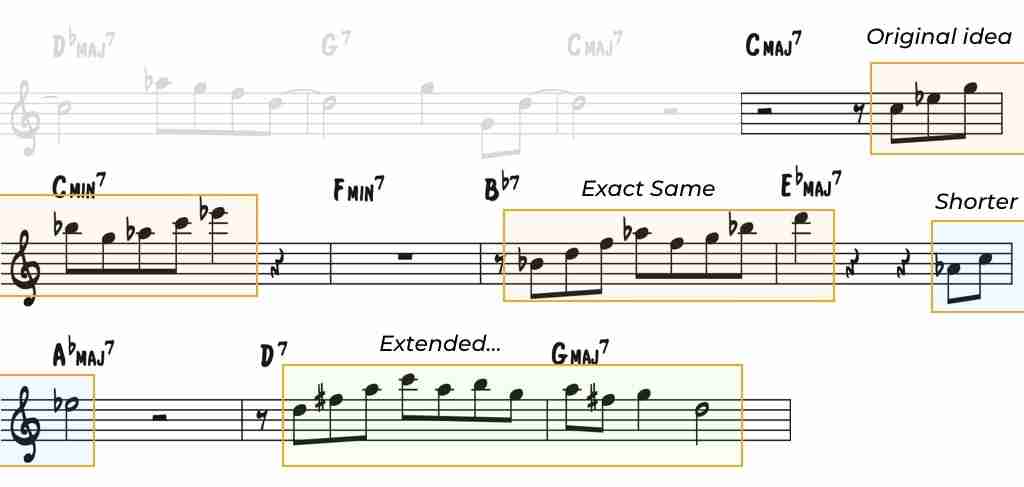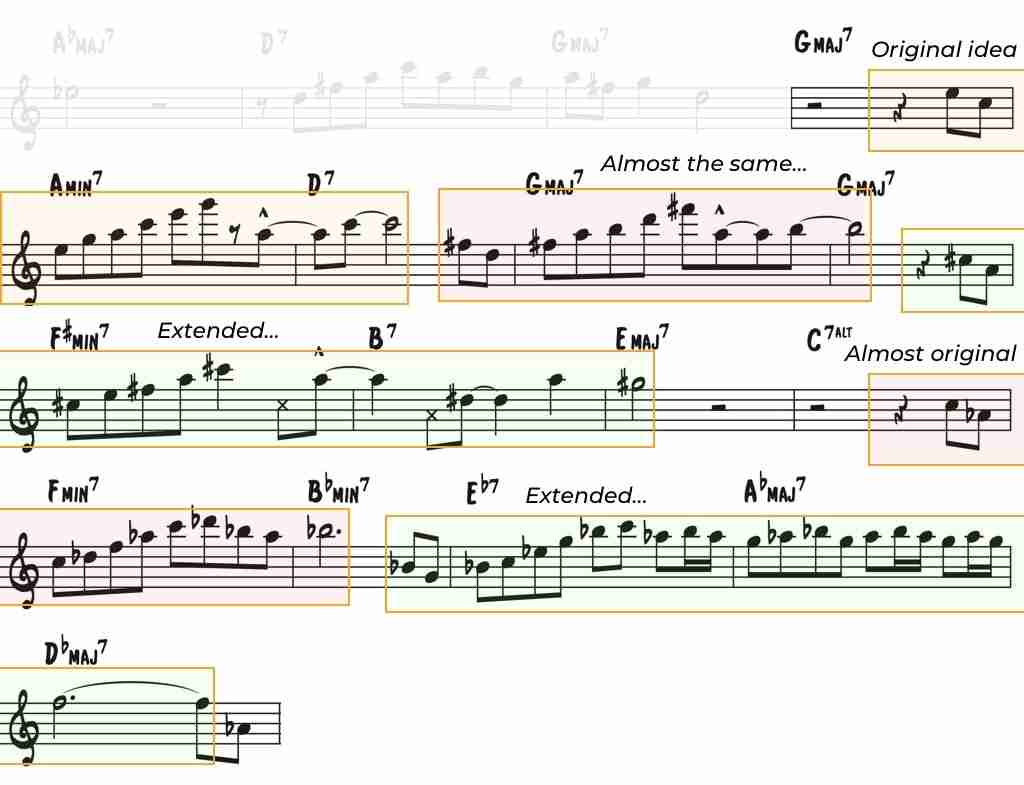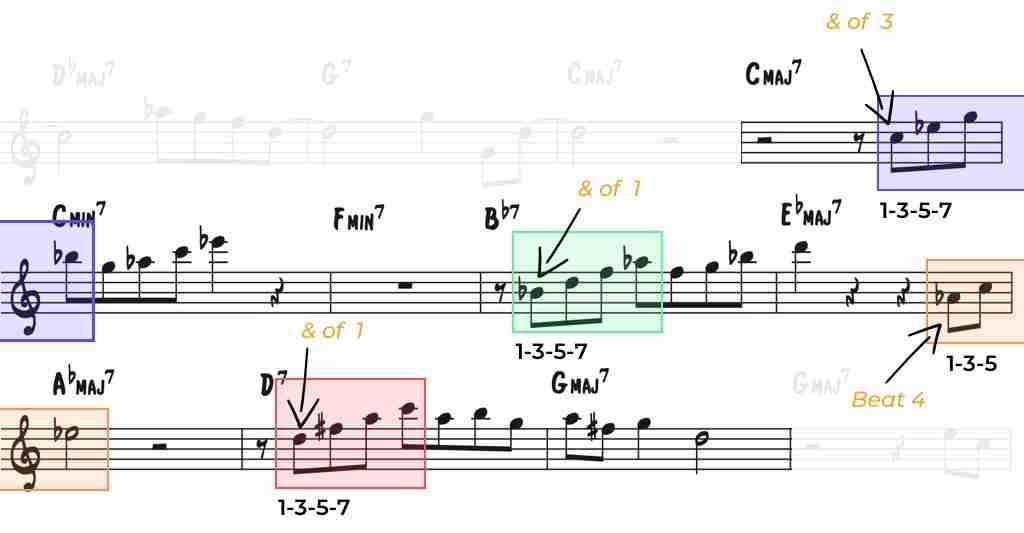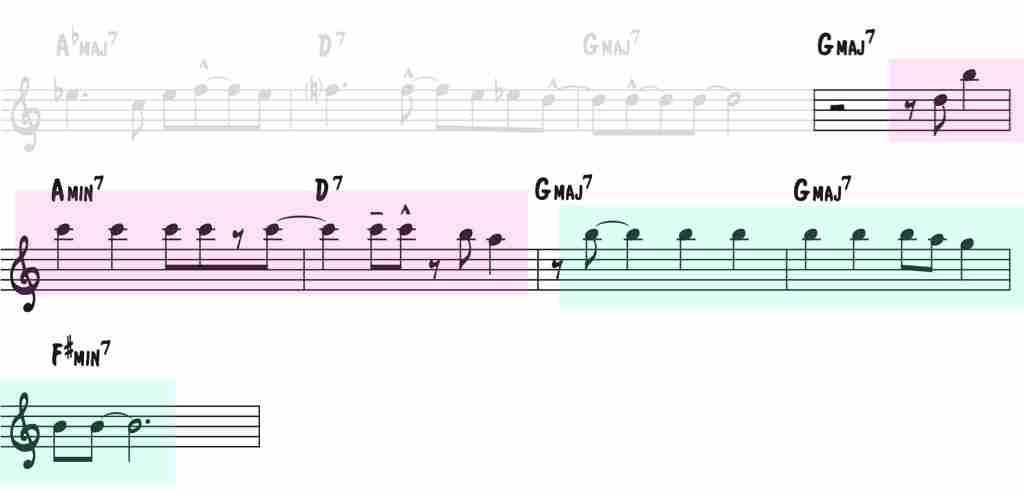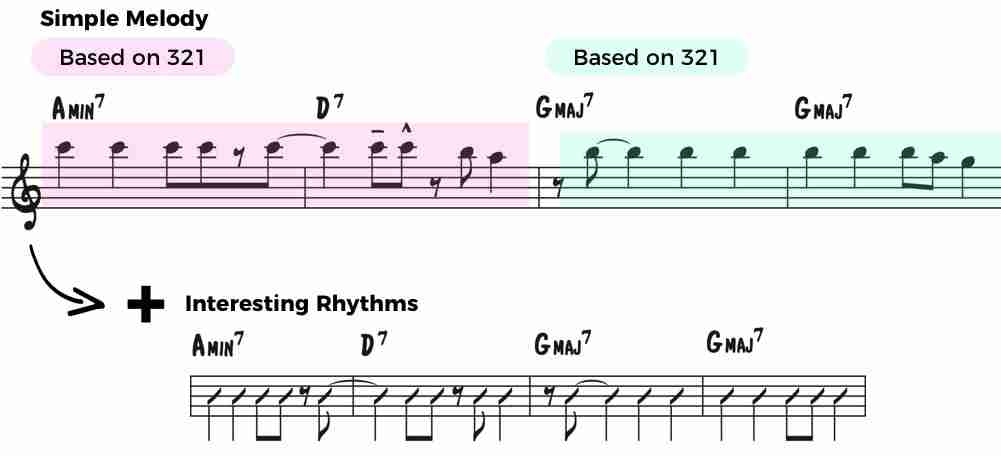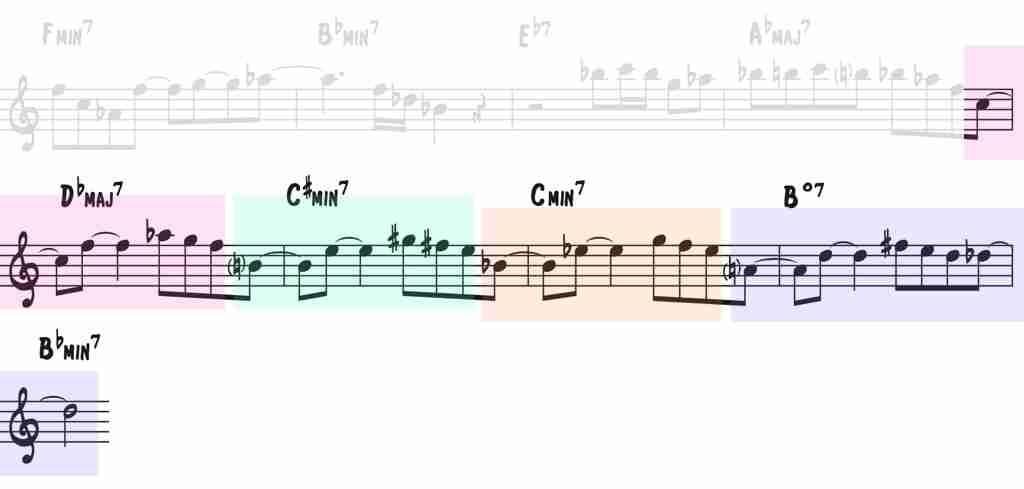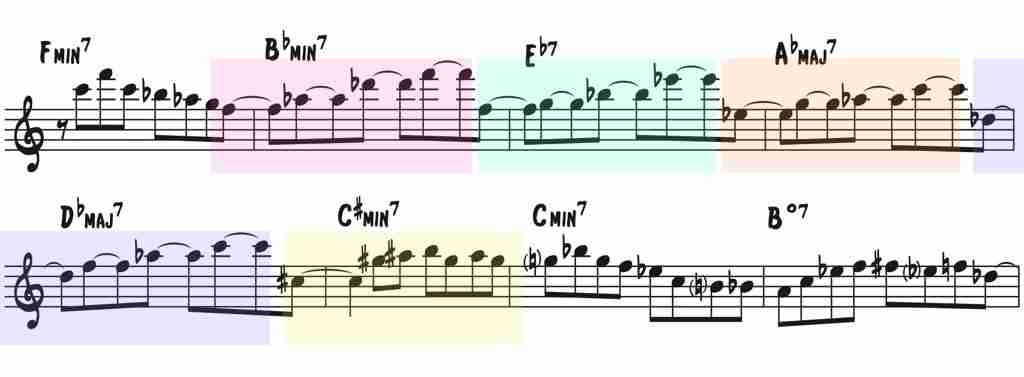Paul Desmond plays the alto saxophone unlike any other…sweet, melodic, and precise, always leading the listener through a clear story from one musical idea to the next – It’s as if every single idea he plays naturally builds on what came before it…
So how does he do it? How does Desmond so effortlessly move from one idea to another with such logical and lyrical flow? How does he develop his motifs so eloquently from one to the next??
Surprisingly, Paul Desmond accomplishes all this and more by utilizing a time-tested compositional technique from the great classical composers like Bach, Mozart, and Handel – Melodic & Rhythmic Sequences.
Sequences – a very general music theory term which essentially means to repeat a musical idea at a higher or lower pitch, a melodic sequence, or to repeat just the rhythms of a musical idea while freely changing the pitches, a rhythmic sequence.
And in both cases, the repetitions don’t have to be carbon copies, but more or less resemble the original idea.
So for example, you could repeat a motif at a higher pitch…keeping the melodic content the same, but putting it over another chord…in this case, we’re using the pitches 12312 of each chord.
Or, you could repeat just the rhythms from an idea while changing the melody…
Now, music theory has a ton of different names to label a musical sequence depending on its characteristics, but our goal today is not to get lost in music theory terms and definitions…
…It’s to teach you how to use the powerful tool of melodic & rhythmic sequences in your jazz improvisation, and get you up and running with it quickly.
To do this, we’ll dive into one of my favorite Paul Desmond solos of all-time…
Paul Desmond: All The Things You Are
What is it that captures you when you listen to jazz?
Is it speed? Technique & chops? Or perhaps tone or range?? Maybe, it’s the emotional content, the freedom of expression, or the ability to tell a story??
It’s often difficult to determine what it is you love about a particular genre, album, song, or musician, but it usually boils down to how much something affects you, and how much you identify with its musical message
When I first heard the album Two of a Mind, featuring Paul Desmond and Gerry Mulligan, I was truly affected.
Different from all the other records I was listening to at the time, it turned my attention to a side of jazz that I really hadn’t previously explored…
Now, I’m not one for labels or putting any of the great jazz artists or their music into certain categories, but I knew one thing…Paul Desmond had a unique approach and I needed to know more…
His playing on All The Things You Are exemplifies this unique approach…
I’ve always felt that his recordings with Gerry Mulligan exhibit a vibrance in the music not present anywhere else…the collaboration between the two brought out something special.
Have a listen and you’ll know exactly what I mean…
Who plays All The Things You Are like that?
Nobody…Except Paul Desmond.
And today, we’ll unmask just a shred of his musical genius by figuring out how he’s able to use sequences so freely and creatively throughout his improvisation.
Let’s get into it – Here are 5 tips that will help you learn to use sequences like the great Paul Desmond…
Sequence Tip 1: Start With a Simple Melodic Idea
When you want to begin using sequences in your playing, it can be quite challenging to know where to start…
What should I think about when I’m trying to create a sequence? Is there some little trick to make them lyrical like Paul Desmond? How can I actually get this device into my playing?
For the aspiring jazz student, these are all common questions, and the answer to all of them goes back to one thing…
To start using sequences, you need to develop the ability to create a concrete melodic idea because that’s how a sequence starts – a simple solid idea that you build and develop upon.
Without an initial clear musical idea, you have nothing to turn into a sequence
To understand how to create a simple melodic idea and how it’s the heart of a sequence, have a look at this passage from Desmond’s All the Things You Are solo…
Can you hear how he’s using a simple melodic idea as the foundation for this entire sequence?
He starts his original idea by moving up the basic chord arpeggio, 1-3-5-7. It doesn’t get any simpler or more clear than that…
And then, each time he repeats the idea, he uses this exact same starting point, again moving up the basic chord arpeggio.
As an improviser, Desmond’s strategy here gives us huge insight into how to build a strong sequence – focus on creating an initial melodic idea that’s easily recognizable by using simple melodic content.
By using simple melodic ideas to start our sequences, the listener can easily latch onto our initial idea and follow how we’re developing it.
Learn to create simple melodic ideas and you’ll have the key at your disposal to starting sequences whenever you desire.
Practice Ideas
Play through All The Things You Are or another standard and…
- First, work on starting all your ideas from 1-3-5-7
- Next, try using other simple chord arpeggios like 3-5-7-9
- And then, change the order or direction, for example 7-5-3-1 or 5-7-3-1
- Brainstorm other ways you can create simple melodic content…what about little scale fragments or just a simple interval?
Sequence Tip 2: Think in terms of chord tones
When you’re learning how to use sequences, a lot of people have the misconception that what your’e doing is moving the original idea into other keys, as if you’re transposing it up or down by a specific interval in real-time.
And while looking at a transcription of a famous jazz musician may lead you to believe that the soloist is transposing ideas this way, that’s not generally how you actually think when you’re improvising.
More often than not, it’s much easier to think in terms of chords and chord-tones, rather than attempting to transpose an idea up or down by a specific interval.
For example, in this excerpt, Paul Desmond uses his initial musical idea to inspire a sequence of 5 other ideas…
From an analytical point of view, looking at the first part of this, you can see that the original idea moves up a whole step so that the the original melodic idea of A minor now fits over G major…
But when he’s improvising, is he actually THINKING about moving the original idea up a whole step??
When you look at this line a little closer, you’ll notice that the notes over G major are actually the same as if he were playing the original idea in B minor…
Now you can think of the chord-tones in terms of G major or B minor. Either way works. But thinking in terms of these chords and chord-tones rather than transposition up a whole step tends to be a much easier way to think for most people.
And thinking in terms of the chord you’re playing over and what chord-tones to play will remain fairly simple as the sequence grows longer, whereas attempting to transpose via interval on-the-spot will get more difficult…
For example, take a look at the passage again and just imagine trying to transpose the initial idea all over the place by the specified interval, while simultaneously developing it…
Transposing in real-time like this would be quite the nightmare!!
But thinking in terms of chords and chord-tones lets you easily take an idea and move it however you wish through the chord changes, while at the same time allowing you to hear how what you’re playing fits in with the harmonic context.
Remember, even though it looks like a great player is transposing an idea all over the place, they’re usually not thinking in terms of transposition – they’re thinking about playing a melodic idea starting from a specific chord-tone and moving to other chord-tones within the sequence.
When you want to sequence an idea and build upon it, thinking about chord-tones is absolutely essential.
Practice Ideas
Play through All The Things You Are or another standard and…
- Practice moving ideas up instead of down. Make sure you’re thinking about every chord and chord-tone you’re playing.
- Try starting sequences on different chord-tones, for example start the first idea on the 5th, and the second on the 7th as Desmond does
- Understand how starting a sequence from a different chord-tone moves you to a different part of the chord structure (lower vs higher, ie. 1357 vs. 3579)
Sequence Tip 3: Vary and Develop Your ideas
So much of the time when we begin to use a new improvisational device, we get lost in the rules of how we think we’re supposed to use it.
When it comes to sequences, if we let this strict rules-based attitude control us the result will end up being stiff and mechanical.
When you’re playing sequences, allow your creativity to carry you…
Let the original motif morph and change. Extend it with another idea, or fragment it by playing only the start of it. Modify your ideas as you repeat them and don’t be boxed in by feeling like you have to play the exact idea over and over on each chord.
Desmond continually varies his original idea within his sequences, rarely repeating the exact idea over a new chord more than once.
Take another look at the first sequence we went over and you’ll see this in action, how he develops his ideas and never sticks to any strict set of rules.
And in the second sequence we looked at, you see the same attitude of using the original idea as a loose guideline…
When it comes to playing sequences, music theory may have its strict definitions, but no one said you need to follow them, or even define things the same way!
Always look to adapt musical tools for your own purpose and follow your own creativity.
Practice Ideas
Play through All The Things You Are or another standard and…
- After playing the original idea for a sequence, purposely shorten it with each repetition, only playing a fragment of the original idea
- After playing the original idea for a sequence, purposely lengthen it with each repetition, extending the original idea with other melodic material
- After playing your original idea for a sequence, purposely vary the idea in a different way with each repetition
Sequence Tip 4: Be Rhythmically Interesting
As we talked about before, one of the most common traits of strong sequences is that they’re based upon simple melodies – a basic chord arpeggio, a few chord-tones, a small scale fragment…
By using such simple melodic content, the listener can easily recognize the sequence, which allows them to naturally follow it as you shift it through other chords and develop it.
But have you noticed what all of Paul Desmond’s sequences have in common? He almost always uses interesting, syncopated, and varied rhythms.
What really makes a simple melodic sequence come alive is the rhythmic content
If we go back to the very first sequence we looked at, you’ll notice that even though Desmond uses the simple melodic content of 1-3-5-7, he begins his phrases in completely unexpected places…
These phrasing concepts take a simple melodic idea and turn it on its head…
Desmond loves to do this and it’s really this technique of combining simple melodic ideas with interesting rhythmic content that gives his sequences such character.
For instance, take this sequence during the bridge of the second chorus…
Although it might look like there’s a lot going on, the sequence is based upon a very simple melodic idea: 3-2-1
But rhythmically the line is incredibly interesting! And again, it’s the simple formula that makes Desmond’s sequences really stand out – combining a simple melody with interesting rhythms.
Next take a look at this point in his solo and listen closely to the sequence. Can you spot the melodic and rhythmic techniques he’s using to create the sequence?
Desmond uses a simple melody based around the chord tones 73-543 and combines it with an interesting off-beat and over the bar line rhythm, creating a beautiful line.
As you get more comfortable using sequences, pay special attention to the rhythms you’re using and how they affect the overall character of your lines.
You’ll quickly find that just by using the simple formula of combining a simple melody with an interesting rhythm, you can easily achieve beautiful sequences.
Practice Ideas
Play through All The Things You Are or another standard and…
- Use the simplest melodic content you can think of to start a sequence. Perhaps try three note combos like 123, 321, 135, 531, etc. And for starters, keep it rhythmically boring, just getting used to playing simple sequences.
- Once you can easily conjure up simple melodic content for your sequences, start adding interesting rhythms to the picture. Start with simple rhythms that focus on combining quarter and eighth notes.
- Then, focus on adding syncopation and over the bar line phrasing to the rhythms of your sequences.
Sequence Tip 5: Use Rhythmic Sequences
As jazz improvisers, we’re always concerned with the chords and clearly communicating their sounds within our jazz lines when we improvise…in fact, often we’re so focused on the notes we play, that we forget about one of the most important aspects of music altogether!
Rhythm tends to take a backseat in most non-drummers minds, and while we saw in our last tip that adding rhythmic interest to our melodic sequences can pay huge dividends, you can actually base your sequences entirely around a rhythm.
And these are aptly named, rhythmic sequences – when you repeat a rhythm through the chord changes, as you freely vary the melody.
Just like melodic sequences, Paul Desmond loves to use rhythmic sequences. Have a look at this example and see if you can spot the rhythm that he’s using as the foundation of his sequence…
The rhythm he’s playing uses offbeat-quarter notes and you play these by simply shifting quarter notes back (or forward) a single eighth note so they no longer align with the downbeats (1,2,3,4), hence they’re “off beat”.
You’ll frequently see them notated with quarter notes instead of tied eighth notes as well, so be sure you realize that these are exactly the same rhythms…
In general I prefer to notate and think about these rhythms as tied eighth notes, but make sure you are able to understand both because you’ll definitely encounter multiple ways people write these types of rhythms out.
Another place where Paul Desmond uses a rhythmic sequence happens in his last chorus during the second A section…
Can you guess what he’s doing rhythmically?
Again he makes use of off-beat quarter notes, but the second time he plays the idea, he puts the quarter note on the downbeat instead of repeating the original idea.
This creates rhythmic contrast within his sequence and adds even more interest to the line as a whole. Just like melodic sequences, remember, you can vary your rhythms within a rhythmic sequence to add character and direction to the line.
And remember, in some ways, rhythmic sequences are actually easier and more flexible than melodic sequences, so don’t forget to use them!
There’s a whole world of possibility when you keep rhythm at the fore-front of your musical mind, so make sure you tap into its potential.
Practice Ideas
- Write out a simple rhythm that you’ll use as the basis of a rhythmic sequence. Then, slowly play through All The Things You Are, or another jazz standard, using your predetermined rhythm as the basis of a sequence.
- Next, try starting your idea a half-beat late or early. Notice how that affects the predetermined rhythm?
- Then, further experiment with starting your phrases on different beats and varying your original idea and writing out other rhythms to use for the exercise
Using Sequences like Paul Desmond
Learning to use sequences in your jazz improvisation can take you to a whole new level. Rather than sticking to the same ii V licks and patterns, it can open your mind to the possibility of developing your ideas and building upon them.
As you begin to unlock this improvisation tool, keep everything we talked about today in your mind…
- Start by learning to craft simple melodies – these are the basis for improvising with sequences and without them, you won’t be able to move forward.
- Focus on basic chord arpeggios, and make sure you’re thinking in terms of chord-tones as you move melodic ideas through the changes. Although it might look like your heroes are transposing ideas on the spot and weaving them intervallically, this is an illusion. They’re really thinking and hearing in terms of chord-tones.
- Don’t be afraid of varying your ideas! Just because sequences are about repeating an idea doesn’t mean you need to confine your playing or your creativity to some strict music theory definition.
- Be rhythmically interesting and use contrast! Remember the formula – a simple melody plus an interesting rhythm makes for a beautiful sequence.
- Use rhythmic sequences along with your melodic ones. There’s so much you can do rhythmically. Don’t ignore this vital element of jazz!
With these 5 tips in mind, you’ll be well on your way to integrating sequences into your improvisational concept.
Start simple, take your time, and sooner than you realize you’ll take the sequencing genius of Paul Desmond and make it your own!
